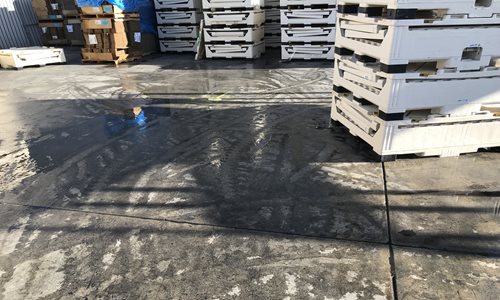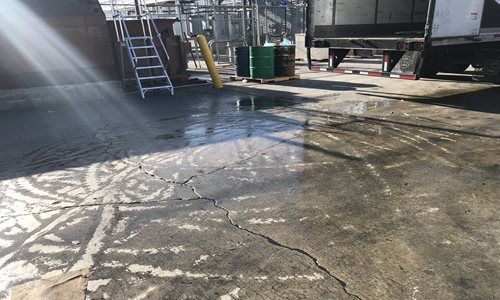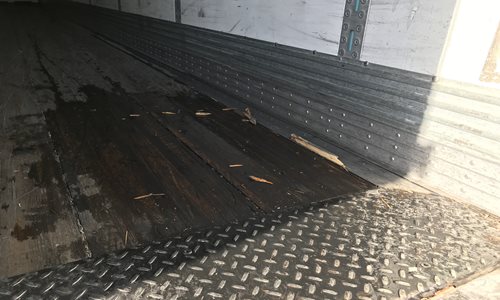Not that we are known for the most treacherous winter weather out in my neck of the woods, but we do get rain on occasion here in Southern California. Although driving in it is a piece of cake, with the exception of the other 90% of people here that lose their minds every time clouds begin to just spit a little, making sure it doesn’t affect your freight is another story entirely. As drivers we of course have the duty of making sure our roofs are leak-free and that any exposed freight on flatbeds gets properly tarped, but when the freight has already suffered overexposure to the elements prior to loading, the call sometimes has to be made whether to even haul it or not!

On a morning this week after a quick storm had blown through during the previous evening hours, I was slated to pick up bright and early at a condiment manufacturing facility to pick up used empty raw ingredient totes. These are loads that I happen to do quite often, where collapsible totes that have been used for raw ingredients are hauled back to their depot for cleaning and sanitizing before being utilized again. Protocol for these is that the user is supposed to store them indoors, mainly because rodents can be attracted to the residual product left inside and they tend to fill up with water when rained down on. As I backed up to the storage area for this pickup though, I noticed they were all stacked up outside and not even under any kind of awning. Looking like they had not suffered too much exposure at first glance, I decided we would proceed with the loading process.

As the forklift driver began to carry the first few stacks over, you could easily tell they had been rained on heavily. The water sloshing out of the sides with each bump the forklift encountered on the pavement was a dead giveaway! Knowing the receiving depot would reject them if they were wet or dirty, I asked the forklift driver to remove the couple stacks we had already loaded on the trailer, so that we could tip them to see how soaked they actually were. As he tipped each stack of six the water came cascading out all over the loading area and even onto the back deck of my trailer. It was at this point I had to make the call, knowing well enough that my next load was another regular food-grade customer that would require no signs of moisture in the trailer.

I was lucky enough in this instance to have a good relationship with the receiving depot, so getting it straightened out and back-charged to the customer for a TONU (truck ordered, not used) was as simple as making a quick phone call and emailing some pictures from my phone. Sometimes it is not this easy but nonetheless, the driver must ultimately make the judgment call if freight is not in satisfactory condition to be loaded. I have even had to make this call due to other elements like sun exposure, when a load of palletized goods looked like it had been sitting outside for a long time and the boxes were faded and worn to the point they might have been considered damaged. Do not let pushy shippers, brokers or dispatchers try to make you load freight that doesn’t appear to be in a transportable condition. After all, the driver is the one that signs for the goods and agrees to their condition before, during and after transit!